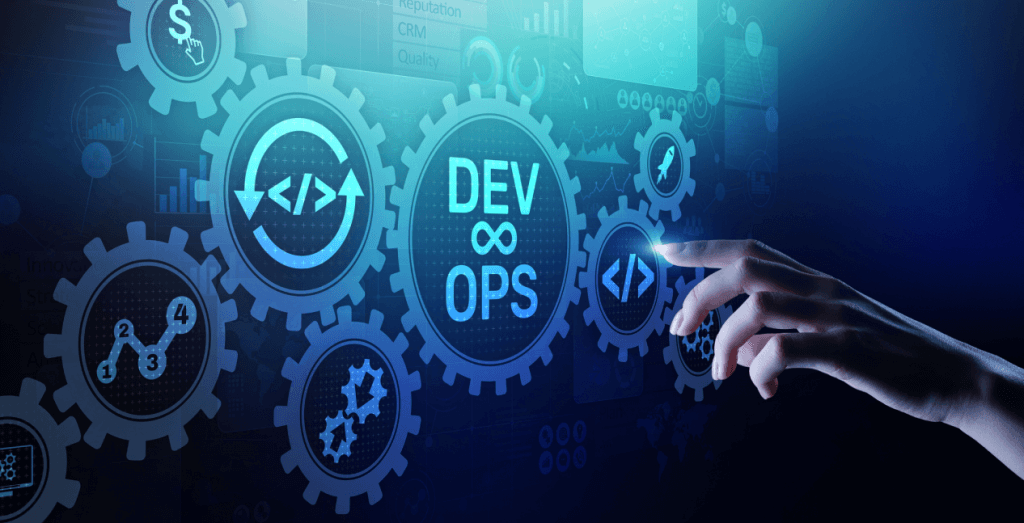The innovations flourishing in the software industry are some of the finest examples of technological evolution. Each tool takes the industry a step further towards a futuristic tomorrow, a tomorrow represented by the convenience that’s never known before. One of the tools that have come in handy for developers and organizations alike is – DevOps!
The software industry’s innovations are some of the most impressive examples of technological progress. Each tool advances the industry one step closer to a futuristic tomorrow, a future characterized by unprecedented convenience. DevOps is one of the techniques that has proven to be beneficial for both developers and enterprises. It is important to keep a note of DevOps trends to stay updated in the competitive market.
Top 5 future trends of DevOps
Below is the list of future DevOps latest trends –
Automation
Highly advanced firms have used considerable automation DevOps techniques in their operations, according to the State of DevOps study for 2021. In addition, the survey found that 90 percent of respondents who used the top DevOps principles automated at least some formerly manual processes. These initiatives will only become more urgent in their implementation for firms that are not considered well advanced. To achieve this, teams must not only automate the entire pipeline but also be willing to integrate AI and machine learning.
IaaS (Infrastructure as a Code)
Infrastructure as a code, which has been rapidly accepted by the industry, is all about changing the development process holding an API-driven approach that can support app codes. The approach is designed to facilitate automation by allowing a database, networks, servers, and storage to all work together using code that is simple to read and change.
It lets enterprises extend out to the cloud with greater storage and data influx. This becomes a vital aspect of the SDLC and DevOps methodology. Furthermore, the use of automation and the cloud reduces the risk of data loss while also improving performance. The nicest part about adopting Infrastructure as a Code is the increased scalability and control over deployments and updates when bringing fixes and interpretations to the infrastructure.
MLOps and ALOps
Organizations must be savvy at organizing and interpreting this massive amount of data because they are always collecting and creating it. When traditional data science solutions can’t keep up with the volume of data created, machine learning and artificial intelligence come into play. Machine learning and other AI model learning algorithms can now benefit from CI/CD and infrastructure auto-provisioning thanks to MLOps and AIOps. These new tools provide people access to massive amounts of data, giving them automatic insight into problems, their sources, and how to address them. It is specifically appealing in the DevOps space because both AIOps and MLOps-wrapped solutions provide the transparency and automation required to speed up operations and cut costs.
Chaos engineering
Another dominating notion that will gain traction in 2022 while providing improved security and crash support is Chaos Engineering. The goal of the method is to break the system down to find weaknesses and reinforce all weak connections. The overall goal of the technique is to assist developers in spotting all potential dangers and avoiding any assaults aimed at degrading the product’s real-world performance or misusing user data.
Though there are numerous tools available to assist developers with the method, it is the proper execution of the practice that makes the most difference. As a result, it is strongly advised that QA and Developers work in tandem when it comes to discovering the system’s flaws through effective R&D.
Continuous use of the cloud
If we talk about the pre-pandemic crisis, most industries were moving toward a more cloud-centric infrastructure to sustain cloud-based workflows and apps. Given the industry’s compelling requirement to adapt and modify, this transformation had to happen much faster than anticipated.
However, simply utilizing the cloud will not result in a highly advanced organization. The majority of DevOps teams are using the cloud, according to the recently released Puppet 2021 State of DevOps study, but most of them are doing it ineffectively.
Conclusion
DevOps brings a good amount of speed, efficiency, reliability, and quality to software development that has never been seen before in the business. Also, it demonstrates how IT leaders can reduce inefficiencies in product delivery without the help of technical expertise. DevOps has shifted the cultural paradigm, emphasizing the positive impact of developers on business choices. Organizations can increase revenue while substantially decreasing costs if IT decision-makers choose competent DevOps platforms and solutions to manage complicated problems. If you hold any queries about DevOps, you can contact OpenXcell anytime.
